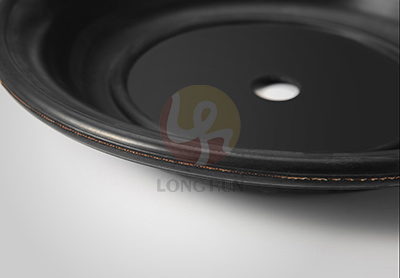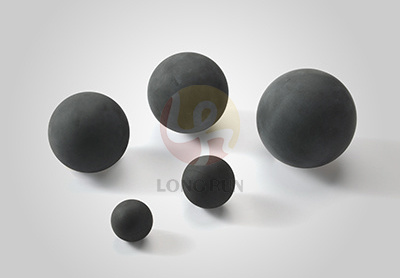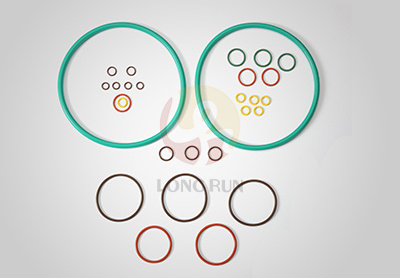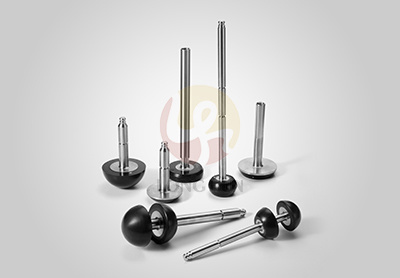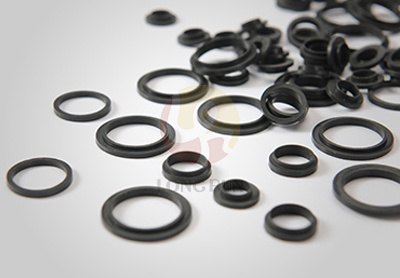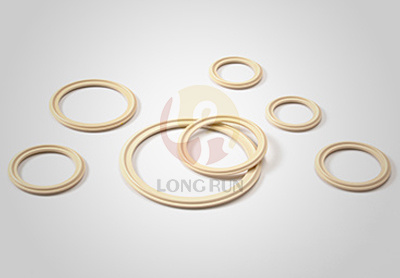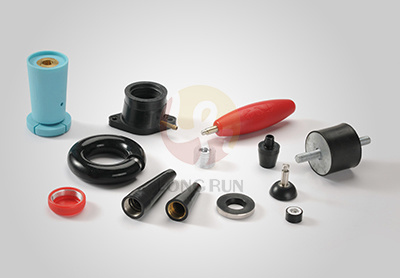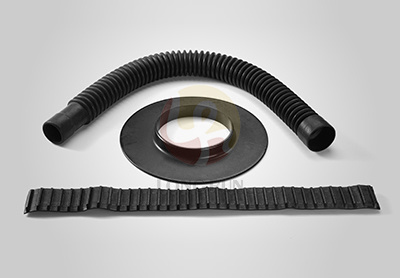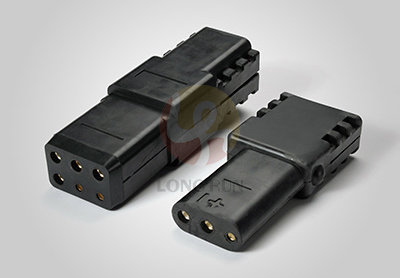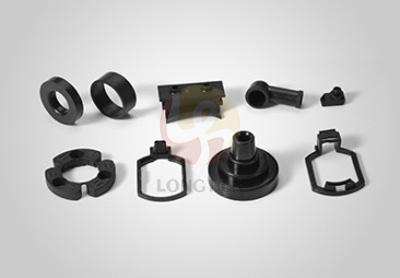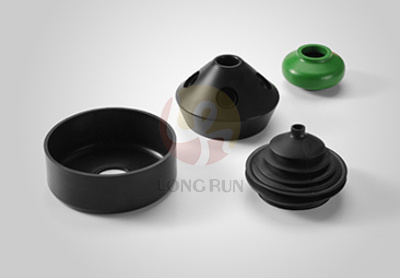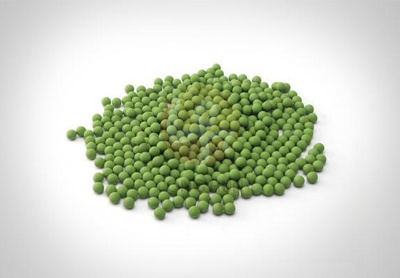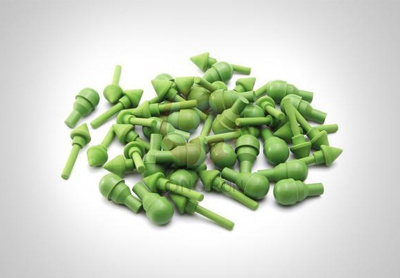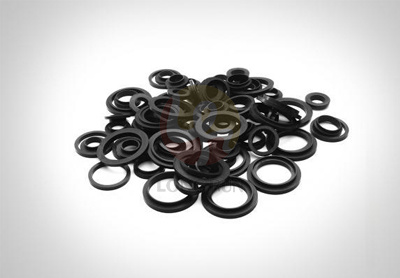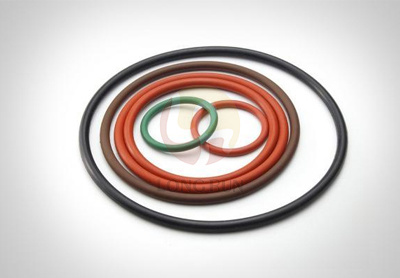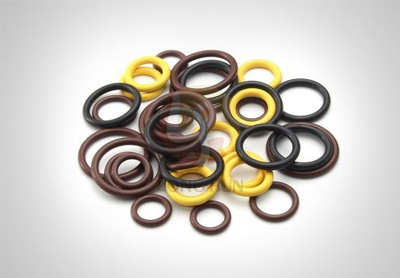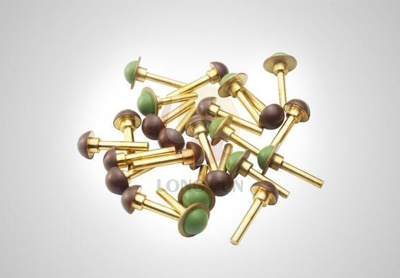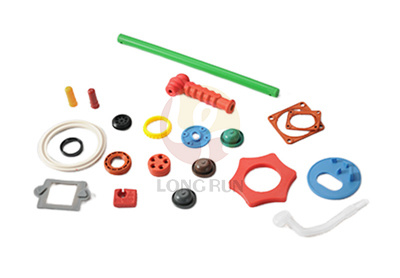Precautions for the Use of Rubber Sealing Rings
Precautions for the Use of Rubber Sealing Rings
Rubber sealing rings play a critical role in preventing fluid or gas leakage in various equipment, such as pipelines, valves, and mechanical components. To ensure their optimal performance, extend service life, and avoid safety hazards, the following precautions must be strictly observed during selection, installation, use, and maintenance.
1. Selection Precautions
Match the Rubber Material to the Medium: Different rubber materials have distinct chemical resistance. For example, nitrile rubber (NBR) is suitable for oil-based media but not for strong acids or alkalis; fluororubber (FKM) excels in resisting high temperatures and corrosive chemicals (e.g., acids, solvents), while ethylene-propylene-diene monomer (EPDM) is ideal for water, steam, and neutral media. Using an incompatible material will cause swelling, hardening, or cracking of the seal, leading to leakage.
Consider Temperature and Pressure Ranges: Ensure the selected seal’s rated temperature and pressure match the actual working conditions. Exceeding the maximum temperature will accelerate rubber aging (e.g., brittleness, loss of elasticity); exceeding the maximum pressure may cause the seal to deform, extrude, or even rupture.
Check Dimensional Accuracy: The inner diameter, outer diameter, and cross-sectional size of the seal must be consistent with the mating parts (e.g., grooves, shafts). A too-small seal will stretch excessively during installation (reducing elasticity), while a too-large one may be compressed and deformed, both affecting sealing performance.
2. Installation Precautions
Clean the Installation Environment and Parts: Before installation, thoroughly clean the seal, mating grooves, and contact surfaces to remove dust, debris, oil stains, or metal shavings. Foreign matter can scratch the rubber surface or get trapped between the seal and the part, causing uneven pressure and leakage.
Avoid Sharp Tools and Rough Handling: Do not use sharp objects (e.g., knives, screwdrivers) to pry or scrape the seal during installation, as this will create cuts or tears. For tight-fitting seals, use a dedicated installation tool (e.g., rubber-coated pliers) or apply a small amount of compatible lubricant (e.g., silicone grease for EPDM seals) to reduce friction—never use lubricants that react with the rubber material.
Ensure Correct Installation Orientation: Some seals (e.g., U-cup seals, V-ring seals) have specific directional requirements for effective sealing. Install them according to the equipment manual; incorrect orientation will result in poor sealing or premature wear.
Control Compression Rate: The compression rate of the seal (the ratio of compressed thickness to original thickness) should be within the recommended range (usually 10%–30% for most rubber materials). Over-compression will cause permanent deformation and loss of elasticity; under-compression will leave gaps, leading to leakage.
3. Usage and Maintenance Precautions
Avoid Long-Term Exposure to Harsh Environments: Do not store or use the seal in environments with strong sunlight, ozone, or high humidity for a long time. Ultraviolet rays and ozone will accelerate rubber aging (e.g., surface cracking, hardening); high humidity may cause metal mating parts to rust, which in turn damages the seal.
Monitor Working Conditions Regularly: During equipment operation, regularly check for leakage, abnormal noise, or temperature rise near the seal. If leakage is found, stop the equipment immediately for inspection—do not continue using it, as this may cause further damage to the equipment or safety accidents.
Replace Seals in a Timely Manner: Even with proper use, rubber seals have a limited service life (usually 1–3 years, depending on the material and working conditions). Replace aged, deformed, cracked, or worn seals promptly. When replacing, use seals of the same model and material to ensure compatibility.
Follow Proper Storage Rules: Unused seals should be stored in a cool, dry, and dark place at a temperature of 5°C–25°C and relative humidity of 40%–60%. Avoid stacking heavy objects on them (to prevent deformation) and keep them away from oils, solvents, and sharp tools.
4. Special Notes for Specific Scenarios
High-Temperature Applications: For seals used in high-temperature environments (e.g., above 150°C), choose heat-resistant materials (e.g., FKM, silicone rubber) and ensure the installation gap is sufficient to accommodate thermal expansion of the rubber.
Low-Temperature Applications: For low-temperature environments (e.g., below -40°C), use low-temperature-resistant materials (e.g., silicone rubber, chloroprene rubber) to prevent the seal from becoming brittle and losing sealing performance.
High-Pressure Applications: In high-pressure systems (e.g., hydraulic systems), use seals with reinforced structures (e.g., PTFE-reinforced NBR seals) and install backup rings to prevent the seal from being extruded into the gap between mating parts.
Prev:
Next:
Related News
Innovative Uses of Rubber Bonded Metal Products in Chemical Manufacturing
Innovative Uses of Rubber Bonded Metal Products in Chemical Manufacturing Table of Contents 1. Introduction to Rubber Bonded Metal Products 2. Benefits of Rubber Bonded Metal Products in Chemical Manufacturing - 2.1 Durability and Resistance to Chemicals - 2.2 Cost-Effectiveness of Rubber Bonded Metal - 2.3 Safety Enhancements in Chemical Processes 3. Key Applications of Rubbe
Dec 13,2025
Unlocking the Potential of Customized Molded Rubber Balls for Diverse Applications
Customized molded rubber balls are increasingly becoming essential components in various industries due to their adaptability and unique properties. These balls can be tailored to meet specific requirements, such as size, shape, color, and elasticity, providing solutions for a wide range of applications. By understanding the advantages and processes involved in creating these specialized products,
Dec 11,2025
Exploring the Role of Quality Fiber Reinforced Diaphragms in the Rubber Industry
Exploring the Role of Quality Fiber Reinforced Diaphragms in the Rubber Industry Table of Contents Introduction: The Importance of Fiber Reinforced Diaphragms Understanding Diaphragms in Rubber Products Fiber Reinforcement: The Backbone of Diaphragms The Manufacturing Process of Fiber Reinforced Diaphragms Applications of Fiber Reinforced Diaphragms Advantages of Using Qua
Dec 09,2025
Essential Insights on Rubber Bellows Manufacturers in the Automotive Industry
--- Rubber bellows are crucial components in the automotive industry, designed to provide flexibility and protection for various mechanical parts. As a manufacturer of automotive transverse components and rubber hoses, understanding the dynamics of rubber bellows manufacturing can significantly enhance your operations. When seeking a rubber bellows manufacturer, it is essential to consider several
Dec 07,2025
The Comprehensive Guide to the Manufacturing Process of Viton O-Rings for Automotive Parts
The Comprehensive Guide to the Manufacturing Process of Viton O-Rings for Automotive Parts Table of Contents 1. Introduction to Viton O-Rings in Automotive Applications 2. The Importance of Viton in Automotive Parts Manufacturing 3. Raw Materials Used in Viton O-Ring Production 4. The Step-by-Step Manufacturing Process of Viton O-Rings 4.1 Mixing Process
Dec 05,2025

